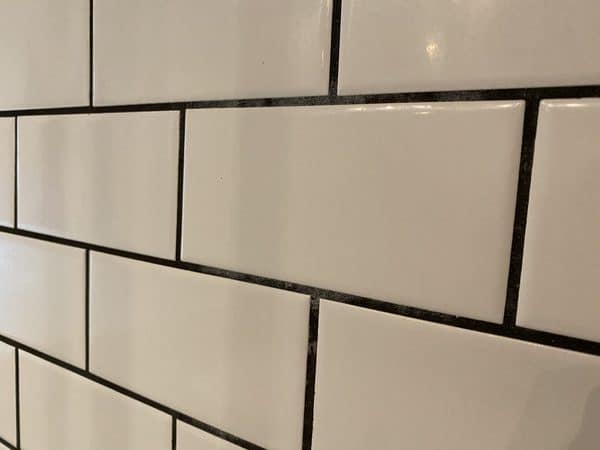When you spend money on your home décor, you want it to look as per your expectations and desires. And when we talk about choosing any item, then ‘durability’ and ‘looks’ are the first criteria.
Take it a couch or a table or tiles! Everything in the house has to go through your durability test! Especially when the tiles are set, you don’t want them to break after the installation or have any gaps between them. That not only causes damage to you and your furniture but also has a higher tendency to break and curse your overall look.
For that reason, we use grout between the gaps of two tiles. Grout is generally made by combining water, cement, and sand. They have different color variations, such as black grout, gold, white, etc.
In this article, we are going to understand how this black grout is beneficial and bad for our tiles and home.
Pros & Cons of Applying Black Grout
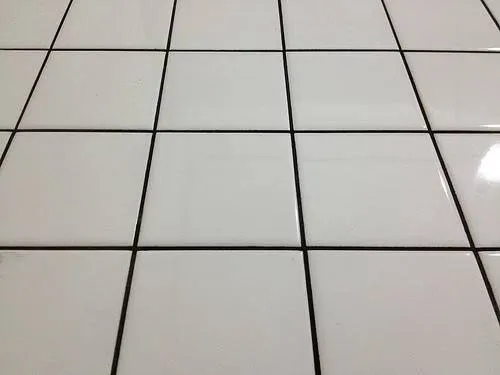
The Pros of using Black grout are that it can easily give your tiles a definition and an overall great look to your entire place. The cons is that it easily fades over time and turns into a dull-gray color. In some places, using black colors is associated with dark, so people usually prefer white color for it.
Note: It must be noted that the color ‘black’ doesn’t represent the true nature of the grout. Grouts are classified based on the materials used. Please retain this terminology while reading this entire article which will explain the pros and cons on the basis of their types.
Major Types of Grout
There are different types of grout which are usually classified on the basis of the materials used to make them. Once you are familiar with the types of grout, it will be easier for you to understand and remember their functionality. In total, there are many options available in the market. However, we will be discussing the 3 most commonly used black grouts.
1. Epoxy Grout
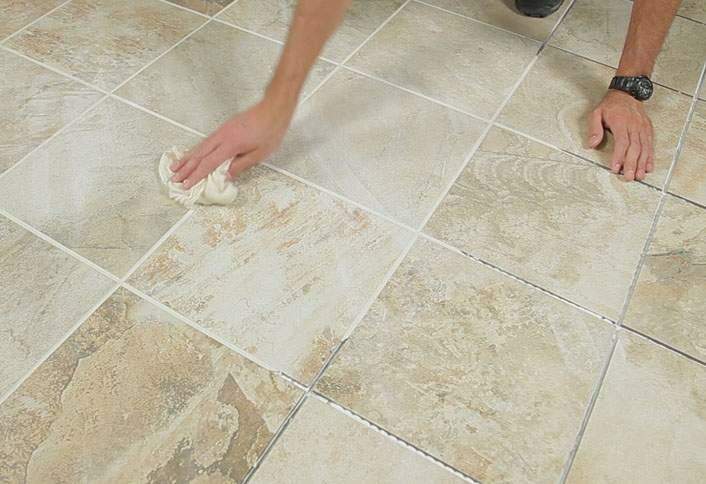
As the name suggests, it is made from epoxy (a type of glue) with some other chemicals. This grout is a modern-day preference of professionals since it offers many advantages over traditional cement grouts. Let’s know some of its pros and cons.
Pros
- Strength: This grout stands on top when it comes to durability. It can stand without even a scratch at places where there is a lot of movement. This includes offices, your kitchen, and even malls! This is mainly due to the super strong and flexible grip of the glue that has been added to the mixture.
- Water and stain resistant: One of the major advantages over traditional grout is that they do not get stained easily. Often when any liquid falls on the floor, like grease or oil, or food gravy, it leaves a mark there for a very long period, even after regular cleaning. In that place, if epoxy grout is applied, then it makes the cleaning process easier.
- Water resistance: This black grout also has amazing water resistance. This is the reason a majority of the bathrooms and swimming pools use this grout. Although water resistance is not a unique feature these days, we can not ignore it as well, especially when they are used in these places.
- Color availability: From black grout to golden grout, if you search on the internet, you will find a large number of hues that are available as per your needs. Also, since they are factory products, there is a very thin chance of uneven coloration.
- Chemical Resistance: Due to the frequent movement to certain places in your house, such as the living room or kitchen, the tiles in those regions start to fade color or get darker. To remove this fade, you may use acids or some other cleaner. However, most cement grout starts to break and come out due to those chemicals. This problem is resolved by epoxy grout.
- Application and Shelf Life: Not only do they come in tubes for easy application, but they also have a way longer life compared to cement grout. Even after being more expensive than cement grout, they are preferred by the majority of people since it proves to be a safer and long-lasting investment.
Cons
- Expensive: With high quality comes a higher price! Although we can not complain about the features it provides, this grout has a higher price range compared to those made of cement. When purchasing a single unit of these tubes, it may not seem like a large price gap, but when ordered in bulk for the first time installation, it may affect your pocket.
- Hard to Modify: As mentioned earlier, they are one of the strongest grips due to the strong glue used in them. It becomes super difficult to modify anything once they are applied. This is a problematic situation when you want to change tiles or replace anyone of them. You would need a professional with specialized tools for this work, And obviously, specialized tools often cost a lot!
- Color Fade: Although they have a very long life in terms of durability. However, due to their nature, they lose their colors faster than cement grout. This discoloration process speed increases when the tiles are set at a place facing strong sunlight. This is the reason why it is suggested to use them with unglazed tiles.
Regardless of these negligible disadvantages, it is worth applying them instead of cement-based grout. Not only for the reason that it offers some of the greatest features but matches the requirement of modern-day homes.
2. Sanded Grout
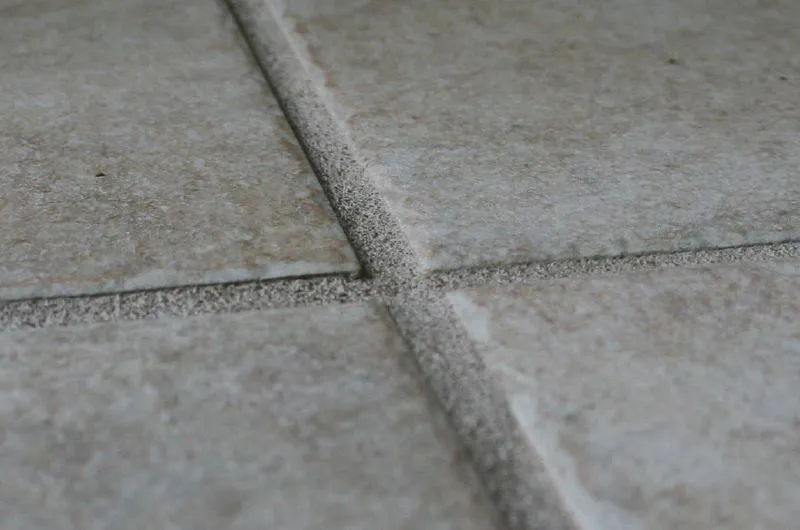
This type of black grout is made by mixing water, cement, and sand. It is often referred to as traditional grout when we talk about epoxy grout. It must be that both the sanded grout and unsanded grout have the same purpose in different situations. First, we will talk about the sanded black grout.
Pros
- Mixture: It is made by adding a certain amount of sand in cement and water. Even though this type of grout is not used frequently but they also offer durability in the long term. One of the major advantages of this black grout is that you don’t need any specialization or high accuracy in creating this mixture.
- Usage and Price: Since it is made by adding sand particles, you can use it in any place where the tile gap is more than 0.15 inches (3.8mm). This grout is the most affordable grout in the entire list of 3. This makes it the best choice for DIY projects!
- Durability: When cement is mixed with sand, it creates one of the strongest structures. For example, bricks are joined using this mixture while constructing houses and some small buildings (For larger buildings, gritstones along with sand). So we can not distrust its strength.
- Color Availability and Quality: Unlike modern-day grout, sanded grout has a larger range of colors available in the market. Users can choose as per their house’s theme and color preference without worrying about these fading over time, like the epoxy grout.
- Easy Modification: Not easy but comparatively easier. If you have the correct tools for scraping off the cement, you can start doing it without worrying about any special mistakes. Just make sure you do not scratch the tiles if your plan is not to remove them!
Cons
- Stains: As mentioned earlier, this black grout is mixed with sand. Due to it, stains and small particles easily stick to it, making it near to impossible to clean! Also, if any strong chemical is used in the process of cleaning, such as any acid. The chances are high that the cement may break.
- Difficulty at Thin Areas: Since the sand particles are quite larger in terms of tile gapping, it is not useful in applying at the places where the gaps between the tiles are less than 0.15 inch. The problem also continues if somehow you manage to apply them. They often dry quickly, which may leave cement marks on the edges, which may take a lot of time to clean.
- Structure: When anyone’s eyes will get on them, it will be noticeably visible that it is a rough surface. If there are infants at your home who crawl, it may be a hard time for them to do so since it may easily scratch their knees.
Regardless of the introduction of advanced grout in the market, it is still used in many places, especially in DIY projects. One must keep in mind the problems that arise with this grout. It is advisable to consult any professional before choosing a perfect grout for your home and outdoors.
3. Unsanded Grout
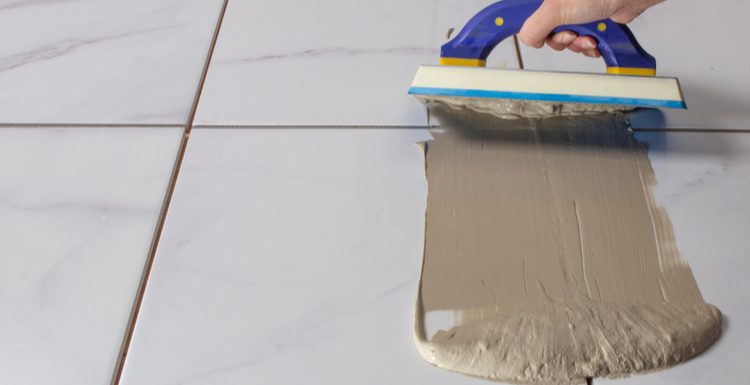
Unlike sanded grout, this type of grout is just a mixture of water and Portland cement. Before the introduction of epoxy grout, the unsanded grout and sanded grouts were used as per the requirement. Where for the thinner gaps (below 0.15 inch), unsanded were used, and for larger sanded were used. The Unsanded grout is in the form of thick liquid but thinner than the sanded one due to its composition, which is mentioned at the beginning of this paragraph. Let us now understand some of its features.
Pros
- Smooth Finish: One of the major advantages it possesses is that it gives a smoother and cleaner look compared to that sanded grout. However, you must read the instruction manual before you start using it, as different brands’ products have different requirements.
- Easy to use: Out of these three grout, it is the easiest to work with. Neither do you have to give special attention while mixing the correct proportion, nor do you have to worry about rough textures as the end results. You can also use them on vertical surfaces as well such as a kitchen.
- Cheap: Since you neither need sand nor some expensive chemicals, all your investment goes to buying Portland cement. The cherry on the cake is you get a lot of color options along with some pre-mixed options that will improve the durability and give a shiny tint to the floor.
Cons
- Limited use: As mentioned earlier, this is a liquid. It means it can not be used in the gaps of tiles if they are more than 0.15 inches. Otherwise, it is easy for it to spread to the undesired parts as well. If somehow you manage to apply them in larger gaps, it would end up cracking within a short period of time (within a week)
- Stains: Just like sanded grout due to cement, stains and small particles easily stick to it, making it near to impossible to clean! Also, if any strong chemical is used in the process of cleaning, such as any acid. The chances are high that the cement may break.
- Usage: To apply this, you will need a rubber grout trowel to push the liquid into the thin gaps. Once you do it, using a cloth, wipe off the excess liquid from the edges for a cleaner look. You can also use a sponge for better results.
Final Thoughts
If you are planning to set up new tiles in your home, then choosing the correct grout can be equally important as choosing the correct tiles. Not only do they fix the tiles and prevent them from breaking due to accidental drops of heavy things, but also, they influence the overall look of your living space.
There are three major grout types that are used by the majority of professionals. They are Epoxy Grout, Sanded Grout, and Unsanded Grout. Epoxy grout is considered a modern type of grout, whereas these sanded and unsanded are termed traditional grouts. Traditional grout offer easy to use and can be applied in different styles by changing the composition. The epoxy offers durability, which, the majority of the time, is good for us but sometimes creates slight problems.
Overall you should choose grout for yourself after analyzing your requirements and taking professional’s advice wherever it is needed.

